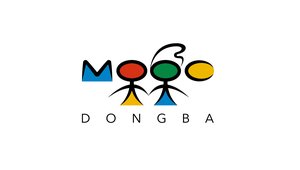Journey through the heritage of Naxi culture
Categories
About the course03/29/2024

Dongba script is the writing system used by priests from the Naxi ethnic group (around 300,000 people), in south-west China during ritual ceremonies. It is described as "the world’s last pictographic script in use" and faces threats of extinction. The Initiation to the Dongba script course, run by Inalco (Institut national des langues et civilisations orientales) in collaboration with UNESCO, the University of Geneva and Beijing Language and Culture University (BLCU), provides an immersive exploration into this unique writing system. You will be introduced to 300 of the 1,400 fundamental symbols of the Dongba script, sourced from the natural and cultural environment of the Naxi people. Emphasizing themes such as humanity, nature, daily life and religious ceremonies. To date, there are no other MOOCs dedicated to Dongba writing, nor are there similar online courses related to the cultural heritage of the Naxi ethnic group in China.
This MOOC spans a duration of 9 weeks and divided into 7 modules that you can follow at your own pace. During each module, you will be introduced to the Dongba script through curated content and pedagogical activities, while understanding the cultural nuances of the Naxi ethnic group.
Each module introduces you to the Dongba characters studied through specific themes such as Family and Community, The human being, Weather, seasons and numbers, Natural areas (Mountains and meadows, Water and fire, Earth), Plants & animals and Daily life (Residence, Food, Clothing and daily tools). Interactive training exercises are provided to asses comprehension, explore additional Dongba characters and practice writing the main Dongba characters encountered.
At the end of this course, you will be able to identify the main characteristics of the Dongba script and Naxi culture, describe the basic construction principles of the Dongba writing system, recognise and decipher the meaning of 300 Dongba characters, write the main Dongba characters and briefly analyse some cultural phenomena related to the Dongba script.
The Dongba MOOC project aims to harness the potential of a massive online course that can transmit the Dongba script to a wide audience, with the ultimate purpose of preserving and "actively" disseminating this pictographic script.
Beyond the exciting learning experience, this course offers a unique opportunity to discover the Dongba language and Naxi culture, while contributing to the preservation and conservation of an endangered cultural heritage.
To register and find out more, click here.
Institut National des Langues et Civilisations Orientales (Inalco)
End of registration: June 9, 2024
Course:from April 15, 2024 to June 17, 2024
Related posts
Notre planète, du Big Bang aux volcans
Categories
About the coursePhilosophie politique et relations internationales : mieux comprendre le présent et penser l’avenir
Categories
About the courseConstruire ensemble une école inclusive
Categories
About the course




